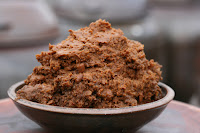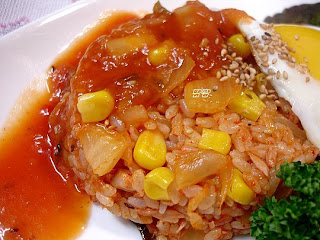The book named The Kimchi Chronicles: Korean Cooking for an American Kitchen written By Marja Vongerichten. Marja is the host of a new PBS television series about Korean food and culture titled Kimchi Chronicles. It is scheduled to debut Summer 2011 with 13 episodes. Each episode will be a combination of eating extravaganza and picturesque travelogue with food serving as a vehicle to meet and celebrate the people, places and traditions of Korea.
written By Marja Vongerichten. Marja is the host of a new PBS television series about Korean food and culture titled Kimchi Chronicles. It is scheduled to debut Summer 2011 with 13 episodes. Each episode will be a combination of eating extravaganza and picturesque travelogue with food serving as a vehicle to meet and celebrate the people, places and traditions of Korea.
The book
At First i've to say The Kimchi Chronicles: Korean Cooking for an American Kitchen is such fun to have a written record of Marja's journey as she learns about her culture and its cuisine. Her interpretation of the foods featured in each Korea segment is easy and made for American kitchens.
is such fun to have a written record of Marja's journey as she learns about her culture and its cuisine. Her interpretation of the foods featured in each Korea segment is easy and made for American kitchens.
The Kimchi Chronicles ties in closely with a recent PBS series about Korea that co-stars Hugh Jackman. Its a wonderful gift for anyone who has visited or is interested in South Korean culture, food, history, etc. The book makes Korean cooking easy and approachable for those who am be a bu timid abou new cuisine. There are also great stories inside that anyone can appreciate. Photos are do e beautifully. I'd suggest this to anyone interested.
Chapter one, which is on Kimchee, might be surprising for anyone unfamiliar with Korean food. Kimchee is not just the pickled red cabbage we associate with the word. Marja shows how different food works together to make an entire experience, not just a meal. If you want to start with the more familiar there are recipes for bulgogi and spiced pork chops. The pork chops were delicious. The seafood and scallion Pajeon taste like we are standing in the middle of the street eating them straight off a vendor cart in Korea.
Highly recommended!!
Recommend Book For you guy who love Kimchi
Posted by Admin
No comments
The book named The Kimchi Chronicles: Korean Cooking for an American Kitchen written By Marja Vongerichten. Marja is the host of a new PBS television series about Korean food and culture titled Kimchi Chronicles. It is scheduled to debut Summer 2011 with 13 episodes. Each episode will be a combination of eating extravaganza and picturesque travelogue with food serving as a vehicle to meet and celebrate the people, places and traditions of Korea.
written By Marja Vongerichten. Marja is the host of a new PBS television series about Korean food and culture titled Kimchi Chronicles. It is scheduled to debut Summer 2011 with 13 episodes. Each episode will be a combination of eating extravaganza and picturesque travelogue with food serving as a vehicle to meet and celebrate the people, places and traditions of Korea.
The book
At First i've to say The Kimchi Chronicles: Korean Cooking for an American Kitchen is such fun to have a written record of Marja's journey as she learns about her culture and its cuisine. Her interpretation of the foods featured in each Korea segment is easy and made for American kitchens.
is such fun to have a written record of Marja's journey as she learns about her culture and its cuisine. Her interpretation of the foods featured in each Korea segment is easy and made for American kitchens.
The Kimchi Chronicles ties in closely with a recent PBS series about Korea that co-stars Hugh Jackman. Its a wonderful gift for anyone who has visited or is interested in South Korean culture, food, history, etc. The book makes Korean cooking easy and approachable for those who am be a bu timid abou new cuisine. There are also great stories inside that anyone can appreciate. Photos are do e beautifully. I'd suggest this to anyone interested.
Chapter one, which is on Kimchee, might be surprising for anyone unfamiliar with Korean food. Kimchee is not just the pickled red cabbage we associate with the word. Marja shows how different food works together to make an entire experience, not just a meal. If you want to start with the more familiar there are recipes for bulgogi and spiced pork chops. The pork chops were delicious. The seafood and scallion Pajeon taste like we are standing in the middle of the street eating them straight off a vendor cart in Korea.
Highly recommended!!
















